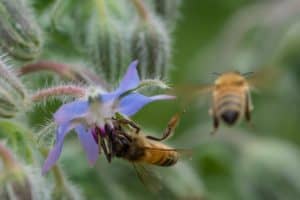Plan for long-term success with multi-generational planting.
Great job! You have taken a wonderful first step towards creating a beautiful and environmentally-friendly space by growing flowers and planning a garden full of pollinators.
Not only will this bring joy to yourself and others who see it, but it will also provide essential habitats for important creatures such as bees and butterflies. Every little effort we make toward creating a greener planet counts, and your contribution is making a significant impact.
Keep up the amazing work, and enjoy the vibrant colors and scents of your flourishing garden! Remember, by taking care of nature, we are taking care of ourselves too.
Filling an outdoor space with flowers is the first step towards inviting pollinators to visit, a handful of seeds sown on the surface of an outdoor container or bare patch of earth makes a blank canvas for a future with wildflowers.
Often areas left void of vegetation will in time end up playing host to local weeds and wildflowers all competing for space, light, water, and nutrients. I have seen trees and vines cover an abandoned house, the tree roots wrapped around a brick fireplace as if ever so slowly crushing the brick and mortar beneath the entwining exposed tree roots.
A garden full of weeds will of course attract a variety of wildlife, but in time it will become overgrown, unkempt, and difficult to maintain. Instead, gardeners are adopting a natural approach to garden design and layout.
-
Red Admiral on Aster -
Goldfinch on Agastache -
Bees foraging on borage
Instead, take time to plan and select plants that are naturally adapted to the harsh environments that our gardens provide, this is the first step to creating a base for your planting plan for pollinators.
A simple pollinator garden design includes long season low maintenance perennials that can be raised from seed, planted as started plugs, or as established container-grown plants. Read more about the Multi-generational planting of wildflower perennials for long-term success.







Pingback: Gardening jobs a perfect career